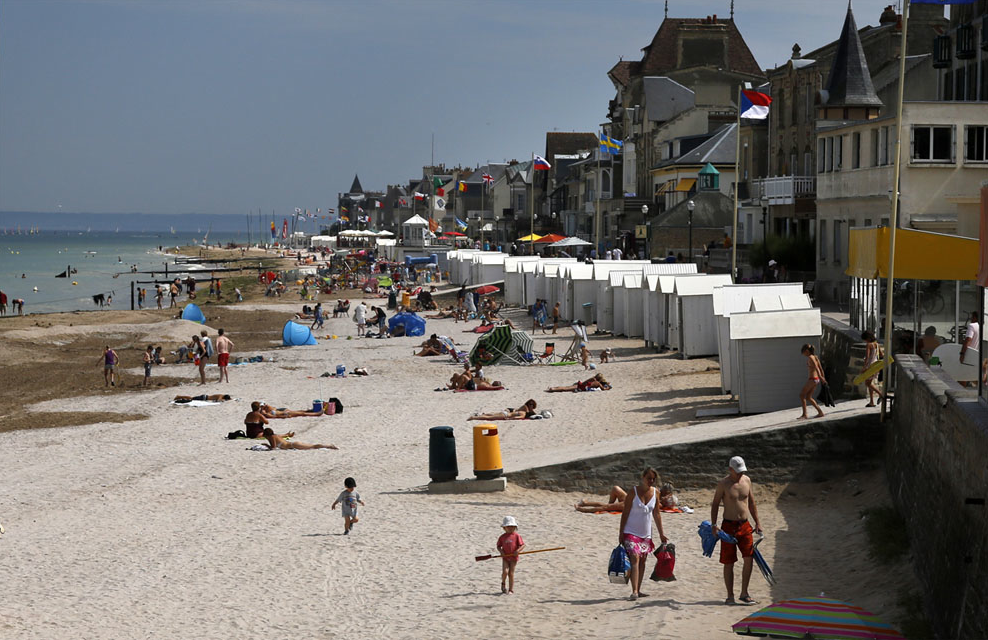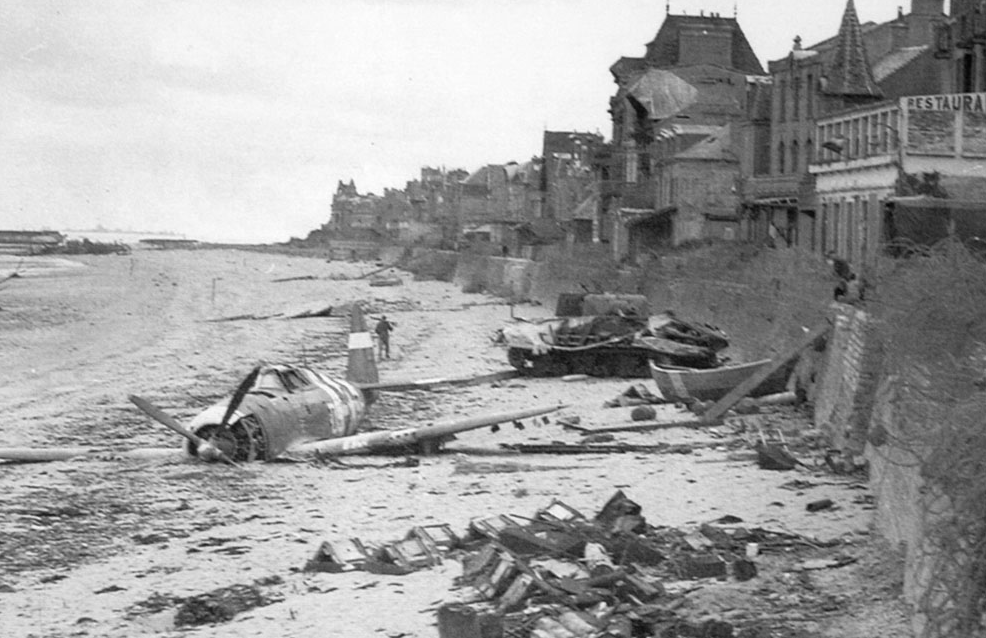The scene could be a community beach front almost anywhere in the world. Cabanas set up for those who can afford them. Tents and umbrellas for others. White sand, small dunes, and blue sea for everyone—swimmers, sailors, and those who just want to sit and catch the breeze coming in off of water. Sun bathers intermixed with children, families coming and going. Soon, one can imagine, the sun will be down, the tide will be up, and only a very few will remain on the beach. A quiet, restful place, with only the rhythmic sound of the waves beating on the surf, lights perhaps shining from the windows in the buildings lining the beach as a reminder of a living community.
But for all of that, it is not just anywhere. It is Saint-Aubin-sur-Mer, France. Seventy years ago this past week it was known as Juno Beach, one of the primary landing zones in the D-Day invasion. Taking this beach head was necessary to provide flanking support to the operations at Gold and Omaha beaches and to give the Allied forces a direct route to a German airfield near Caen. The beach was heavily fortified by two German battalions armed with over 500 machine guns plus numerous mortars, a defensive position enhanced by weather patterns that made it necessary for landing crafts to come as close to the fortifications as possible before releasing troops and equipment. The responsibility to take the beach head fell to the 3rd Canadian Infantry division, which suffered over 1,000 casualties by day’s end—the highest ratio of Allied casualties for anyone other than those landing at the more famous and costly Omaha and Utah beaches.
Photographs, of course, only mark a sliver of time—typically only a fraction of a second that frames the here and the now in stark and radical terms. One cannot know what happened moments (or months or years) before this photograph was snapped, let alone what might happen even seconds after the shutter has opened and closed. Temporal continuities with the past, let alone alternate future possibilities can only be surmised. Such limitations don’t mitigate the value of images, but instead only emphasize the need for us to be imaginative in how we understand the reality that they put on display. And too, it requires us to recognize the ways in which the historicity of an image operates in tension with what it was then (or it what it might be later). It is, in short, part of an archive that has to be curated and engaged.
And so here we have Juno Beach shortly after the D-Day invasion. A crashed fighter plane where families today luxuriate. The detritus of battle washed up against fortifications that protected Axis forces from the landing Allies. The appearance of a solitary ghost town cast in somber grey tones where today colorful commerce flourishes, marked by the flags of multiple nations.
This too, of course, was only a stark sliver in time. A scene of courage and fortitude, of death and destruction that can only remind us that what was before the lens when it clicked was there and then, even as it only framed a reality that could survive only in imagined memories.
Credit: Chris Helgren/Reuters; National Archieves of Canada (for other “before” and “after” pictures of the D-Day invasion click here.)

